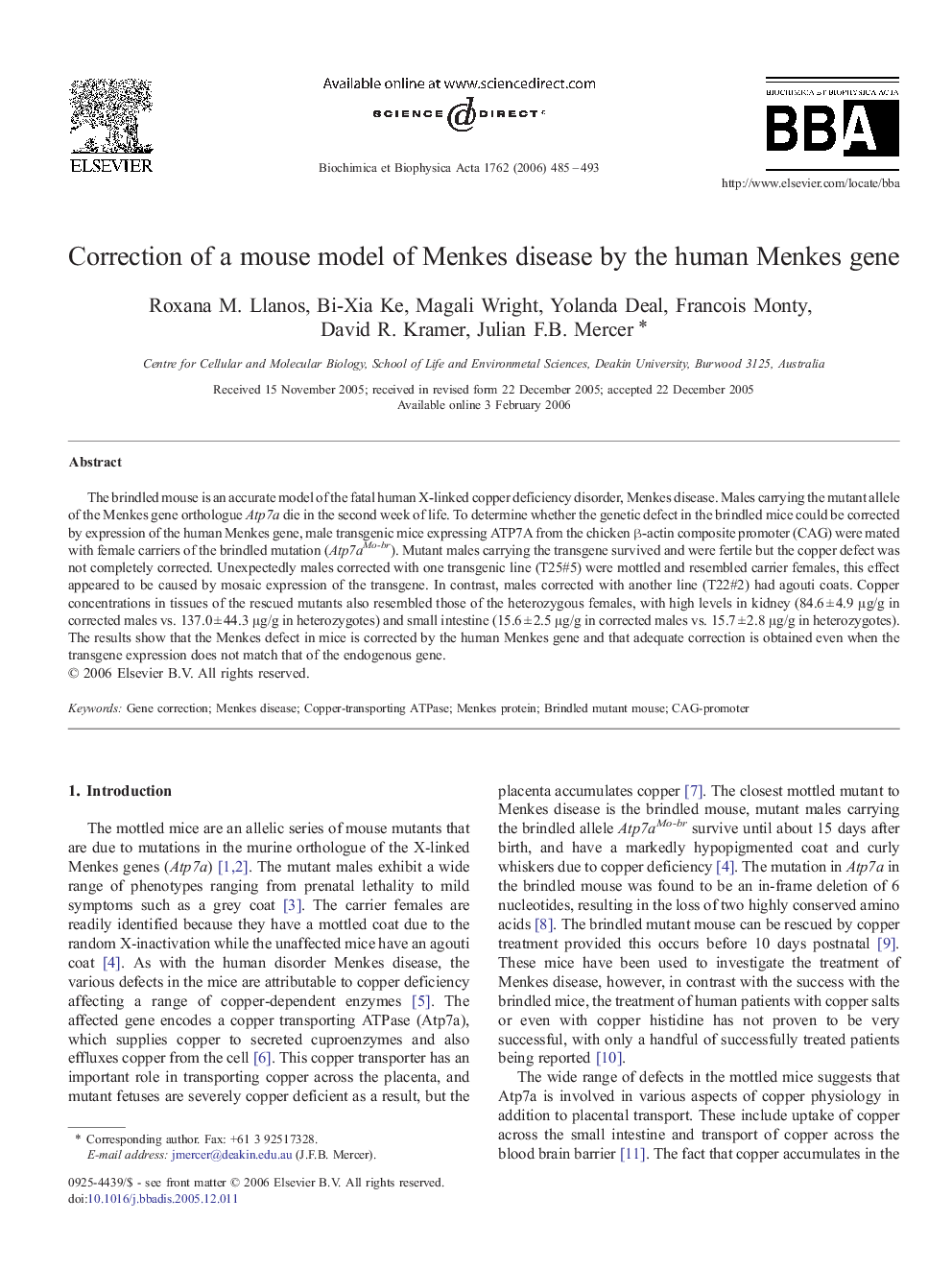| Article ID | Journal | Published Year | Pages | File Type |
|---|---|---|---|---|
| 1906039 | Biochimica et Biophysica Acta (BBA) - Molecular Basis of Disease | 2006 | 9 Pages |
The brindled mouse is an accurate model of the fatal human X-linked copper deficiency disorder, Menkes disease. Males carrying the mutant allele of the Menkes gene orthologue Atp7a die in the second week of life. To determine whether the genetic defect in the brindled mice could be corrected by expression of the human Menkes gene, male transgenic mice expressing ATP7A from the chicken β-actin composite promoter (CAG) were mated with female carriers of the brindled mutation (Atp7aMo-br). Mutant males carrying the transgene survived and were fertile but the copper defect was not completely corrected. Unexpectedly males corrected with one transgenic line (T25#5) were mottled and resembled carrier females, this effect appeared to be caused by mosaic expression of the transgene. In contrast, males corrected with another line (T22#2) had agouti coats. Copper concentrations in tissues of the rescued mutants also resembled those of the heterozygous females, with high levels in kidney (84.6 ± 4.9 μg/g in corrected males vs. 137.0 ± 44.3 μg/g in heterozygotes) and small intestine (15.6 ± 2.5 μg/g in corrected males vs. 15.7 ± 2.8 μg/g in heterozygotes). The results show that the Menkes defect in mice is corrected by the human Menkes gene and that adequate correction is obtained even when the transgene expression does not match that of the endogenous gene.
